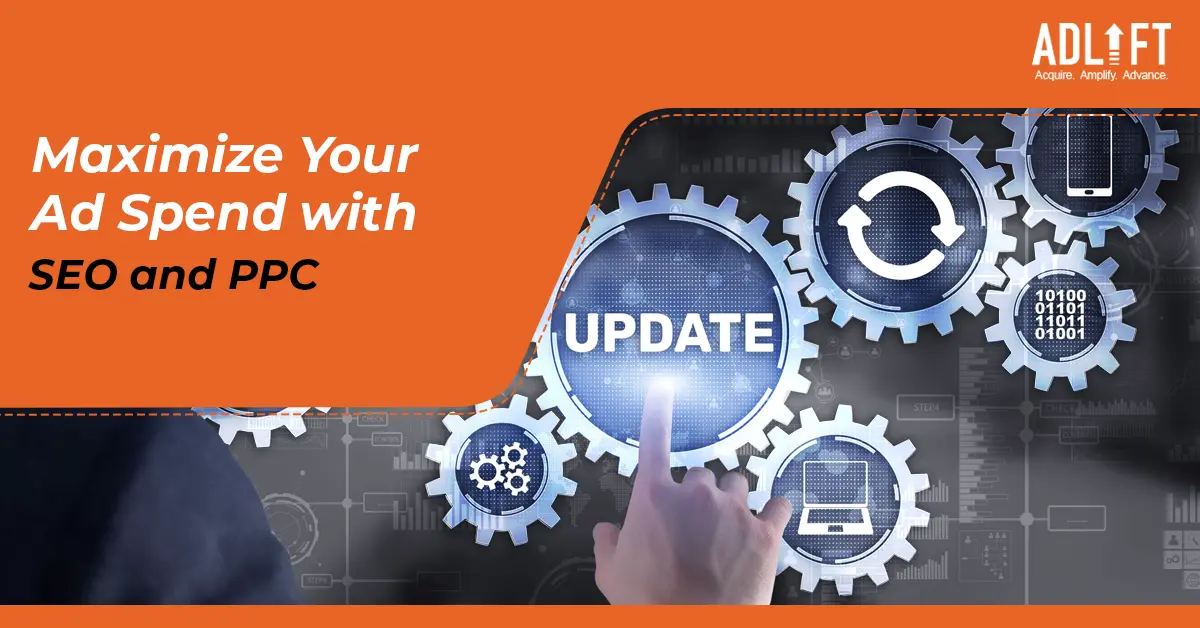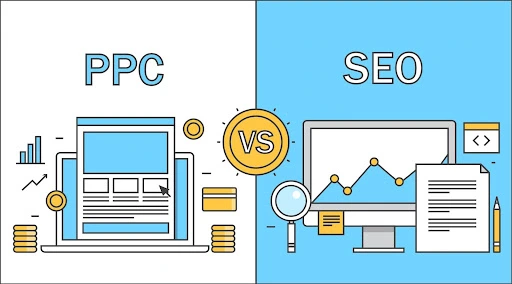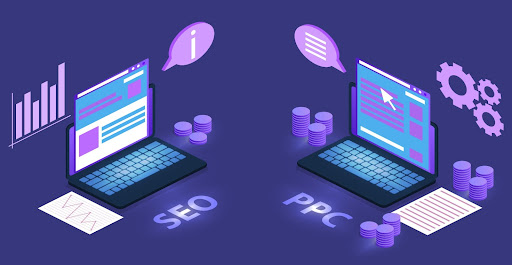Maximizing Your Ad Spend with SEO and PPC: Strategies and Tactic

SEO and PPC are two different digital marketing strategies that can help increase traffic to your website. SEO focuses on optimizing your website for search engines, while PPC involves paying for ads that appear at the top of search results.
At Adlift, we understand the importance of getting the most out of your advertising budget. That’s why we’re here to share some strategies and tactics to help you maximize your ad spend with SEO and PPC.
When it comes to maximizing your ad spend, it’s important to understand the strengths and weaknesses of both SEO and PPC. SEO can be a great long-term investment, as it can help your website rank higher in search results over time. However, it can take time to see results, and it’s important to stay up-to-date with the latest SEO trends and best practices.
On the other hand, PPC can deliver immediate results and can be a great way to quickly generate traffic and leads. However, it can also be expensive, and it’s important to carefully manage your budget to ensure you’re getting the most out of your ad spend.
So, how can you use SEO and PPC together to maximize your ad spend? Here are some strategies and tactics to consider:
-
Use SEO to target long-tail keywords
Long-tail keywords are longer and more specific search terms that can be easier to rank for than shorter, more general keywords. By targeting long-tail keywords with your SEO strategy, you can attract more qualified traffic to your website and increase your chances of converting those visitors into customers.
For example, if you sell running shoes, targeting the keyword “running shoes” might be difficult and competitive. However, targeting a long-tail keyword like “best-running shoes for marathon training” could be more effective, as it’s more specific and targeted to a particular audience.
-
Use PPC to target high-value keywords
While long-tail keywords can be a useful strategy for search engine optimization, solely relying on them may not suffice in achieving your business objectives. In this scenario, pay-per-click advertising can provide a solution by targeting keywords of high value, thereby increasing traffic and leads in a shorter span of time.
These high-value keywords are the ones that hold the utmost relevance to your business and have a considerably high search volume. For instance, if you deal in home security systems, aiming for keywords like “home security” and “security systems” would qualify as high-value keywords to focus on for your pay-per-click campaigns.
-
Use retargeting to increase conversions
Retargeting is a PPC tactic that involves showing ads to people who have already visited your website or engaged with your brand in some way. By targeting people who are already familiar with your brand, you can increase your chances of converting them into customers.
For example, if someone visits your website but doesn’t make a purchase, you can use retargeting ads to remind them of your brand and encourage them to come back and complete their purchase.
-
Use SEO to improve website usability
In addition to optimizing your website for search engines, SEO can also help improve the overall usability of your website. By making sure your website is easy to navigate, loads quickly, and provides valuable information to visitors, you can increase the likelihood that visitors will stay on your website and convert into customers.
-
Use PPC to test and optimize your ad copy
One of the benefits of PPC is that it allows you to test different ad copies and landing pages to see which ones perform best. By continually testing and optimizing your PPC campaigns, you can improve your ad copies and landing pages over time, which can help increase your conversion rates and ROI.
Conclusion
In conclusion, by using a combination of SEO and PPC strategies, you can maximize
your ad spend and achieve better results for your business. By targeting long-tail keywords with SEO and high-value keywords with PPC, you can attract more qualified traffic to your website and generate more leads and conversions. Retargeting can also be an effective way to increase conversions by targeting people who are already familiar with your brand.
When it comes to maximizing your ad spend, it’s important to have a comprehensive digital marketing strategy that includes both SEO and PPC. By using these strategies together, you can increase your chances of success and achieve better results for your business.
At AdLift, we specialize in helping businesses maximize their ad spending with effective SEO and PPC strategies. Our team of experts can help you develop a customized digital marketing plan that meets your unique needs and goals. Contact us today to learn more about how we can help you grow your business through SEO and PPC.
FAQs
Ans: You might own a website and want to maximize the ad spend through SEO and PPC. For that, you have to focus on strategic keyword targeting, A/B testing, compelling ad copy, optimizing landing pages, and monitoring performance analytics.
Ans: In this digital era, marketing strategy is crucial for the overall growth of a business. You can integrate SEO and PPC by aligning keyword research, using high-performing keywords in both campaigns, and optimizing landing pages for relevance. Moreover, leverage PPC data to identify effective keywords and allocate resources.
Ans: Retargeting is essential for the successful conversion of potential visitors to the website. Here’s how you can use it in your PPC campaigns:
- Create segmented lists based on user behavior.
- Develop tailored ad content that addresses their specific interests or abandoned actions.
- Set up retargeting campaigns across platforms like Google Ads or social media. It will remind and entice users to return, thereby increasing conversion rates and ROI.
Ans: Integrate long-tail keywords by researching relevant terms and naturally incorporating them into high-quality content, headings, and meta details. Address user intent, target local searches, and monitor performance for continuous refinement, enhancing your SEO strategy’s effectiveness and attracting more qualified traffic.
Ans: Optimize ad copy in PPC campaigns by crafting concise, compelling headlines and descriptions that highlight unique selling points. Use relevant keywords, create a sense of urgency, and incorporate clear calls to action. Regularly A/B test variations to refine messaging, improve click-through rates, and maximize conversions, enhancing overall campaign performance.
Ans: Measure SEO success through organic traffic growth, keyword rankings, backlinks, and engagement metrics. For PPC, track click-through rates, conversion rates, ad positions, and ROI. Utilize Google Analytics and Google Ads reports for performance oversight, data-driven modifications, and optimal results.
Ans: You can efficiently oversee SEO and PPC budgets by establishing clear goals and allocating funds according to performance analysis. Prioritize impactful keywords and tactics, monitor spending, adjust bids, and conduct regular campaign reviews.
Ans: Enhance website usability for SEO through intuitive navigation, clear content, fast loading times, mobile responsiveness, and accessible design. Moreover, you must prioritize user experience to reduce bounce rates and boost engagement, positively impacting search engine rankings.
Ans: Common SEO mistakes include keyword stuffing, ignoring mobile optimization, and neglecting site speed. Talking about PPC, irrelevant ad copy, broad targeting, and not setting proper conversion tracking are some common mistakes that you must avoid. Moreover, overlooking data analysis, a lack of A/B testing, and not adjusting strategies based on performance are errors in both SEO and PPC.
Recent Posts
- Optimizing For Google AI Overviews: What Marketers Need To Know November 19, 2024
- Google’s Latest Shake-up: November 2024 Core Update November 13, 2024
- SEO Ranking Explained: Proven Techniques to Enhance Your Website’s Traffic October 22, 2024
- The Importance of Mobile SEO Optimization: A Guide to Staying Competitive October 16, 2024
- What is Evergreen Content? Build Traffic That Never Fades October 15, 2024
- The Role of Technical SEO Elements in Enhancing Site Performance and Rankings October 10, 2024
- Customer Acquisition 101: Building a Loyal Client Base October 10, 2024
- How User Experience Directly Impacts SEO Rankings: Key Factors to Consider October 8, 2024
- Core Web Vitals and SEO: How to Optimize for a Faster Website? October 3, 2024
- What is Schema Markup? Strategies to Use it for Better SEO Performance September 16, 2024
Get
in Touch
Contact AdLift for a 360-degree marketing plan


